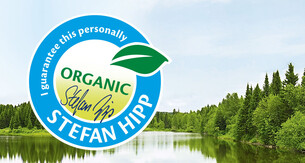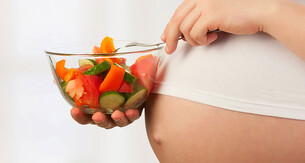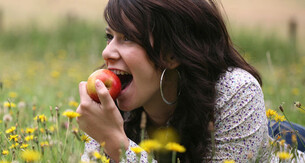Your baby is now around 28 cm in size (roughly the same as a corn on the cob), half the size they’ll be when they’re born. They weigh almost half a kilo at 430-475 grams, but this weight still isn’t the main reason for your own weight gain. By the time they’re born, they’ll have put on a lot more weight, which will be crucial for them to survive and thrive outside the womb.
Pregnancy weeks:
Week 22 of pregnancy: Your baby is half the size they’ll be at birth
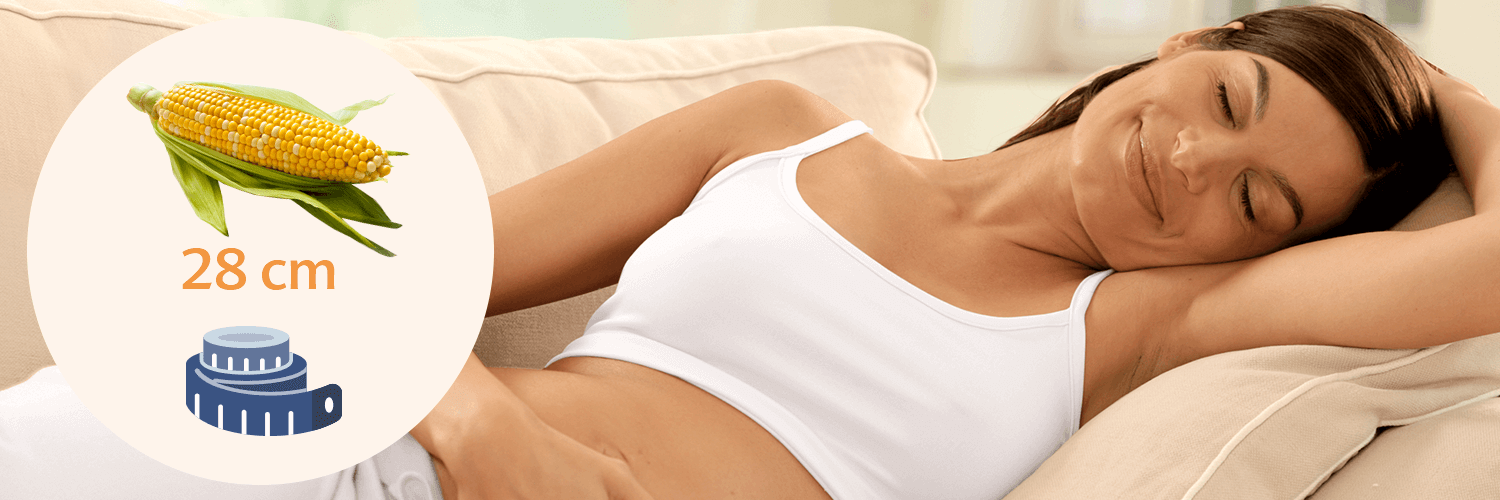
Size of your baby in week 22
Your baby’s development
What it’s like for the mum-to-be in week 22
Top tips
Questions you may want to ask your doctor or midwife
Size of your baby in week 22
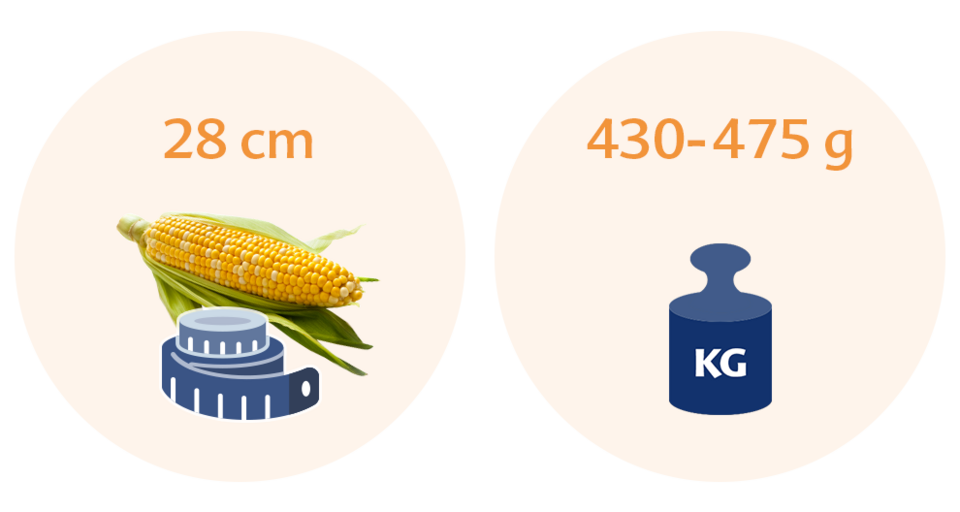
Your baby’s development
By week 22, your baby resembles how they’ll look when born, though quite a lot smaller and thinner. The development of their skin layers is more or less complete: although the lack of subcutaneous fat means their skin is very wrinkly at the moment, that fat will come in the next few weeks as your baby puts on more weight and the wrinkles will disappear.
Your baby’s body hair has also grown, and their hair, eyelashes and eyebrows are as they will be at birth – apart from the fact that their hair currently looks like a soft, white fuzz because the pigmentation that gives their hair and skin its colour hasn’t developed yet.
In their dental ridge, just below their gums, their first milk teeth are beginning to develop. They’ll break through when they’re between 6 and 9 months old.
Your baby’s limbs (their arms and legs) are in correct proportion to the rest of their body and, from week 22, their weight gain will begin to outstrip their growth in length.
The amount of fatty tissue in their body increases very quickly, which will play a key role in allowing them to regulate their body temperature once they’re born. It’s a complicated process, but in essence: they convert the fat into energy, which produces heat.
Your baby is also absorbing important antibodies from your bloodstream to build up their immune system, which will help them fight off infections, stay healthy and thrive once they’re born. This means that minor infections such as a cold can actually be a good thing during pregnancy, as the antibodies you produce also boost their immune system.
What it’s like for the mum-to-be in week 22
By now, you’ll almost certainly be able to feel your baby moving – when they get hiccups, for instance, you’ll feel it as sort of rhythmical twitching. Other people will also be able to feel their movements by putting their hand on your belly, which can be particularly exciting for the dad-to-be as he can now “feel” his child for the first time. Sometimes you’ll only barely feel your baby, and sometimes you might not feel them at all, but this is nothing to worry about. You should take advantage of the time when they’re not moving around: they’re about to undergo an enormous growth spurt which will make things noticeably different.
You’ll definitely have noticed that you’ve put on weight. This is to be expected, and you’ll put on more in the months to come. The extra pounds are spread over your belly, hips, breasts and bottom, where pregnant women’s fat reserves build up.
Your doctor and midwife will regularly monitor your weight gain, as it’s a key indication that your pregnancy is progressing well and your child is developing as they should. Don’t worry about the odd kilo – simply enjoy being pregnant.
Common signs and symptoms
Your body is now working hard to prepare for the time after the birth when you’ll be feeding your baby. The clearest sign of this is in your breasts, which are bigger than they were a few weeks ago and feel different. It’s highly likely that they’ll feel sore, and the skin will stretch. Have you tried HiPP Mamasanft Body Butter? It’s specially formulated for the needs of damaged skin during and after pregnancy.
Your breasts prepare to feed your baby
Your breasts are now developing specific features for breastfeeding. Small protrusions called Montgomery glands are forming on your areolas (the areas around your nipples) to clean and lubricate your nipples while you’re breastfeeding. Breastfeeding is a strenuous task, and the Montgomery glands produce a fatty liquid substance which soothes the surrounding nipple tissue, makes it supple and helps prevent sores. If you notice this substance leaking, you can simply spread it over your nipples with your fingers, but often you won’t know it’s happening – mother nature does it for you.
Soreness and visible blue veins in your breasts
The increased blood flow to your mammary gland tissue might result in blue veins becoming visible under your skin or even protruding clearly. However, it’s nothing to worry about – it’s a reminder that you need to look after your breasts. If you experience soreness, gently massaging your breasts in a circular motion will help (lavender oil is the best choice, as it soothes the pain and makes your strained skin more supple). Your bras should provide good support, and the straps shouldn’t be digging in to your skin. If you like, you can start wearing a nursing bra now and/or cooling inserts specially designed to reduce the soreness in women’s breasts, and you can keep wearing them when you’re breastfeeding.
Midwife’s advice
There are various household remedies, such as quark, which contain essential oils that can help when you’re breastfeeding. Make sure that you only spread these remedies over your breasts themselves and not your nipples.’ Dorothee Kutz, midwife
Top tips
- Rub skincare products into your skin to keep it smooth and supple.
- Start looking for paediatricians in your locality.
- Wear comfortable, breathable bras (you might like to start wearing a nursing bra now).
- Make sure you wear comfy clothing that gives your belly enough freedom.
Questions you may want to ask your doctor or midwife
Choosing the right nappies
After you give birth, you’ll be buying nappies for your baby for the next 2 years or so. There are all kinds of different nappies and nappy changing systems available for parents to buy, and you can choose between cloth nappies, disposable nappies or a combination of the two. If you choose disposable nappies, make sure they’re soft and gentle on your baby’s skin: our HiPP Extra Soft Nappies, for example, are ideal for your baby’s sensitive bottom. Your midwife can offer useful advice on nappies and nappy changing, and our guide also tells you everything you need to know.
Top tip: If you’re thinking of buying nappies now, one or two packs will be enough. You don’t know how big and heavy your baby will be, and it’ll be time for the next size up sooner than you think!
If you haven’t done so already, start thinking about where you want to give birth
You will normally have the option of choosing where you want to give birth. You might be able to stay overnight in the hospital after giving birth, or you may wish to go home as soon as possible (your decision may depend on whether the hospital has a neonatal unit). Of course, you may wish to avoid the hospital and give birth in a midwifery unit or in your own home with an experienced freelance midwife in attendance.
Speak to your midwife or doctor about the pros and cons of each option. It’s also a good idea to speak to other mums about what they did and their experiences of giving birth.
Information about the author:
Juliane Jacke-Gerlitz is a registered nurse. She has been working in the field of mother and breastfeeding counselling for more than ten years. Currently she is working as a medical writer and psychological consultant. Juliane Jacke-Gerlitz has been married for 22 years, is a mother of eight children and lives with her family in Halle.

